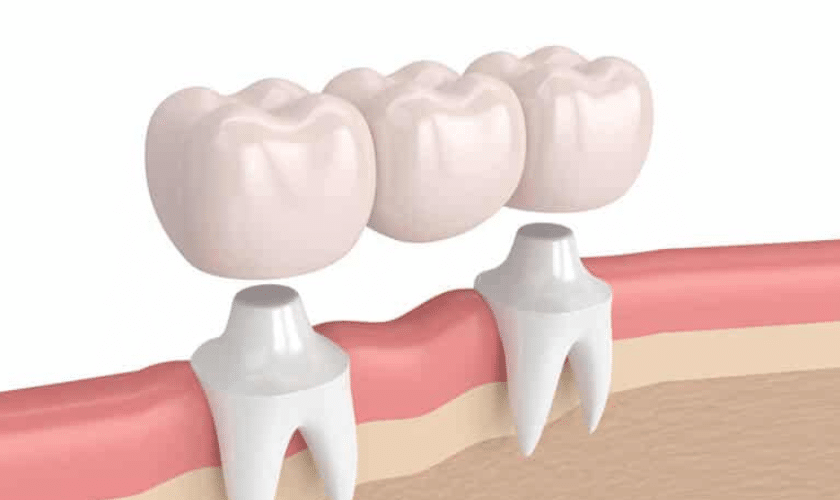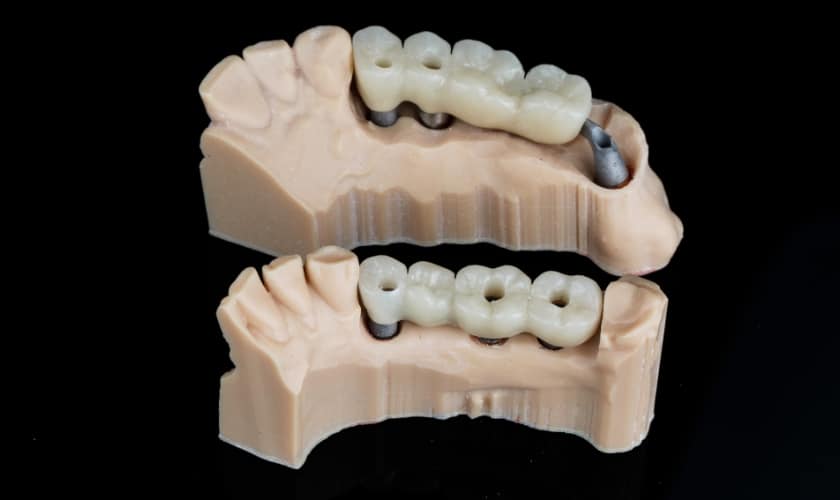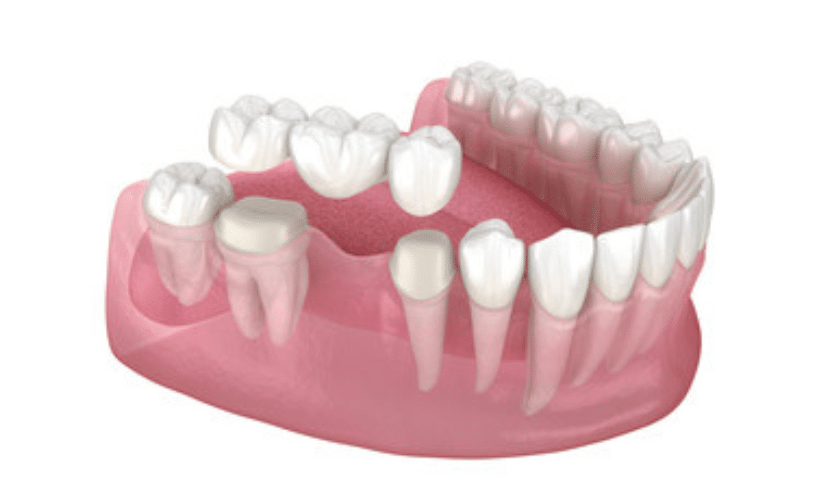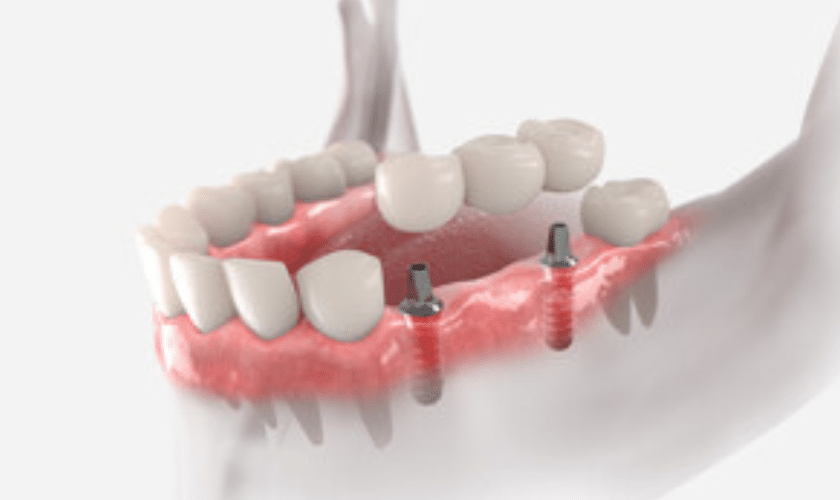
By Gentle Touch Dentistry Richardson
Your smile is more than just a set of teeth. It’s a reflection of your personality, confidence, and overall health. Unfortunately, missing teeth can make you feel self-conscious and affect your oral health. That’s where dental bridges come in! These innovative restorative devices are designed to help fill the gaps caused by missing teeth, giving you back your beautiful smile and optimal oral health. In this blog post, we’ll explore how dental bridges work, the different types available, what to expect during the healing process, and more.
What Are Dental Bridges?
Dental bridges are restorative dental treatments designed to replace missing teeth. They are custom-made prosthetics that are anchored onto the remaining healthy teeth, also known as abutment teeth or dental implants.
A bridge typically consists of two crowns that cover the abutment teeth and an artificial tooth called a pontic, which fills in the gap left by the missing tooth. The crowns serve as anchors for the pontic and hold it securely in place.
Dental bridges can be made from various materials such as porcelain, ceramic, gold alloys, or a combination of these materials. Your dentist will help you choose which material is best suited for your needs based on factors such as your bite pattern, aesthetic preferences, and budget.
In addition to restoring your smile’s appearance and function, dental bridges provide several benefits including improving speech clarity, preventing remaining natural teeth from shifting out of position, and reducing stress on your jaw joint.
If you’re missing one or more teeth and looking to restore them with a long-lasting solution that promotes optimal oral health then dental bridge treatment may be just what you need.
How Do Dental Bridges Restore Oral Health?
Dental bridges are an effective solution for restoring the oral health of those who have lost one or more teeth. They work by filling the gap left by missing teeth, thereby preventing other teeth from shifting and causing further oral health problems.
By bridging the gap between healthy teeth, dental bridges help maintain proper chewing and speaking abilities. They also prevent bone loss in the jaw that can occur when a tooth is missing.
The restoration of oral health through dental bridges involves several steps. First, your dentist will thoroughly examine your mouth to determine which type of bridge is best suited for your needs. Next, they will prepare adjacent teeth for crowns that will anchor the bridge in place.
After this preparation is complete, an impression of your mouth will be taken to create a custom-made bridge that fits perfectly into your smile. Once installed, you’ll need to keep up with regular at-home brushing and flossing along with routine check-ups with your dentist to ensure long-lasting results.
Dental bridges can greatly improve both the function and appearance of a patient’s smile while promoting optimal oral health.
What Are The Different Types Of Dental Bridges?
Dental bridges are a great option for restoring missing teeth, but not all dental bridges are created equal. Different types of dental bridges exist to fit different needs and preferences.
The traditional bridge is the most common type of bridge used in dentistry. It consists of one or more artificial teeth anchored by crowns on either side of the gap. The natural teeth next to the gap must be filed down to accommodate these crowns.
A Maryland bridge, also called a resin-bonded bridge, is a less invasive option that doesn’t require as much tooth reduction. Instead, it involves bonding an artificial tooth to metal wings that attach to the backside of adjacent healthy teeth.
Cantilever bridges work similarly to traditional bridges but only have one crown anchoring them instead of two. They’re best suited for gaps located at the back of your mouth where there’s no need for as much support.
Implant-supported bridges involve surgically placing implants into your jawbone and attaching a bridge onto those implants with screws or cement.
Consult with your dentist about which type of dental bridge would be best for you based on factors such as location and number of missing teeth, budget, and overall oral health.
How Long Will It Take For My Teeth To Heal After A Dental Bridge?
After having a dental bridge installed, it is natural to wonder how long the healing process will take. The good news is that it typically doesn’t take very long for your mouth to adjust to the new restoration.
In general, most people experience some mild discomfort or sensitivity immediately following the procedure. However, this should subside within a few days as your gums and teeth get used to the bridge.
It’s important to maintain good oral hygiene during this time by brushing twice daily with a soft-bristled toothbrush and flossing gently around the bridge. Your dentist may also recommend using an antibacterial mouthwash or special cleaning tools to keep your teeth and gums clean.
If you experience any persistent pain or discomfort beyond the first week after getting your dental bridge, be sure to contact your dentist right away. They can examine your mouth and make any necessary adjustments or provide additional treatment if needed.
While everyone’s healing timeline may vary slightly depending on individual circumstances, most people find that they are fully adjusted within two weeks of getting their dental bridges placed.
What Should I Do If I Experience Pain After Having A Dental Bridge Installed?
It is common to experience some discomfort or mild pain after the installation of a dental bridge. However, if the pain persists or becomes severe, it’s essential to take action and seek professional advice.
Firstly, ensure that you follow any post-operative instructions given by your dentist. These may include avoiding certain foods and drinks for a while and taking prescribed medication as directed.
If the pain continues beyond a few days, contact your dentist immediately. They may need to adjust the bridge or check for any underlying issues such as an infection or nerve damage.
In addition to seeking professional advice, some self-care techniques can help alleviate discomfort. Applying an ice pack on the affected area for 10-15 minutes at a time can help reduce swelling and numbness.
It’s important not to ignore any persistent pain after having a dental bridge installed as it could be indicative of an issue that needs attention. By following these steps and seeking timely professional care when needed, you can ensure optimal oral health and comfort with your new dental bridge.
Bottom Line
Dental bridges are a great solution for restoring optimal oral health. They can help you regain your confidence and improve the functionality of your teeth. With proper care and maintenance, they can last for years to come. It’s important to consult with your dentist to determine which type of dental bridge is right for you.
Remember, it’s never too late to restore your smile and take control of your oral health. Don’t let missing teeth hold you back any longer – consider dental bridges as a viable option today.






